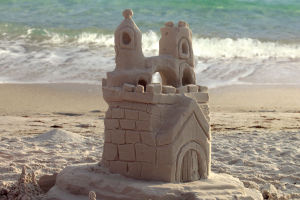Bridges are transportation structures built with the collective wealth of society, serving the general public, and are engineering entities through which humans intervene in natural and cultural environments.
They are also material symbols of societal self-affirmation. The public, open, and iconic characteristics of bridges have sparked sustained societal interest in them.
In the past two decades, the aesthetics of bridges have gained increasing attention. A universally recognized beautiful bridge brings acknowledgment and affirmation to project managers or owners, visual enjoyment and pride to the public, and reputation and influence to engineers and architects.
What constitutes beauty in a bridge? The perspectives of engineers and architects may align to some extent.
Most (structural or bridge) engineers focus on technical, material, construction, and economic factors, believing that a beautiful bridge must be sturdy, safe, durable, cost-effective, and efficient.
Additionally, bridge structures should adhere to the "form follows function" principle with rational stress distribution, simple and proportional forms, and harmony with the surrounding environment. Historically, famous bridges have been predominantly designed and constructed by engineers.
In architecture, architects emphasize the visual artistry of architectural forms, the expression of architectural functions, and the artistic representation of architectural languages.
They often employ innovative and avant-garde architectural forms or decorations to subvert traditional structural concepts, showcase unique personal styles, and pursue extraordinariness and distinctiveness. Recently, some bridges designed or intervened by architects have also aroused solid societal interest.
Let's now explore several world-renowned bridges with distinct characteristics:
1. Infinite Loop Bridge
This circular sculpture bridge in Denmark connects the city with the seascape, allowing people to experience an infinite panorama in a constantly changing scenery.
The entire bridge has a diameter of 60 meters, with half above shallow sea level and half above the beach. The bridge's pillars extend two meters into the shallow sea, backed by forests and a historically significant castle, offering a view of the boundless sea ahead.
2. Melkwegbridge
The Melkweg Bridge is located in the historic Dutch city of Purmerend and connects to the new Weidevenne district. The design team aimed to create a distinctive landmark that effectively connects the old and new areas.
This massive arch bridge connects roads on both sides of the river, towering prominently over the water at 12 meters, forming a magnificent urban landscape. People can fully appreciate the old and new aspects of the city from the high point. The bridge must meet the requirements of accessibility while also serving cyclists. However, the bridge must be 100 meters long to meet the slope requirements for both.
Therefore, the architects separated the pedestrian and bicycle paths, allowing pedestrians to climb the arch bridge quickly to reach the other side. The 48-meter-long bicycle path appears to float on the water's surface, and when boats pass underneath, the two sides of the bicycle path separate from the middle junction, rotating to the side to allow passage.
The pedestrian bridge weighs 85 tons and features 130 steps on its curved steel arch. Combining the two types of pathways is cohesive and open, with unified materials and colors. LED lighting design also considers both, creating beautiful scenery at night.
3. Möbius Ring-Derived Bridge
Based on visual and theoretical principles, this bridge is a seamlessly connected Möbius ring, combining mathematical rationality with artistic beauty. Occupying a prime location, the bridge offers views of Rotterdam's skyline and an endless expanse of sky.


